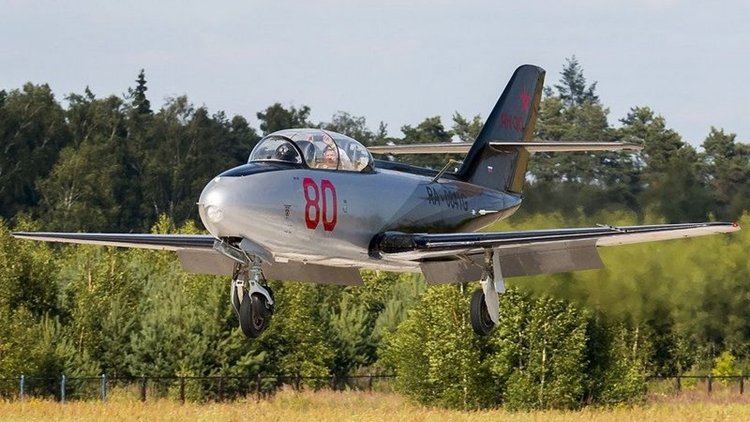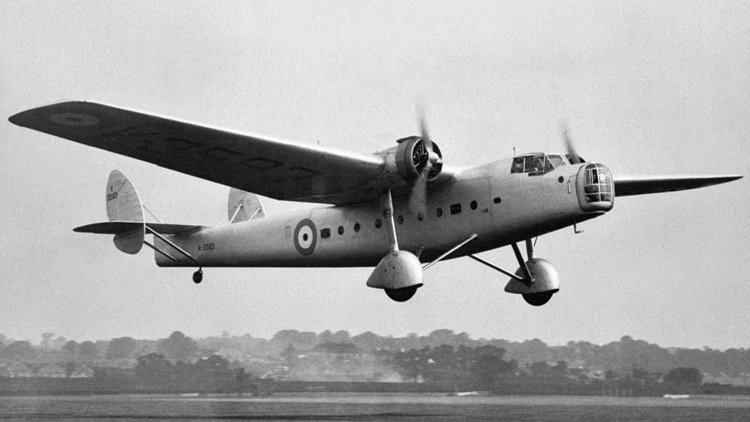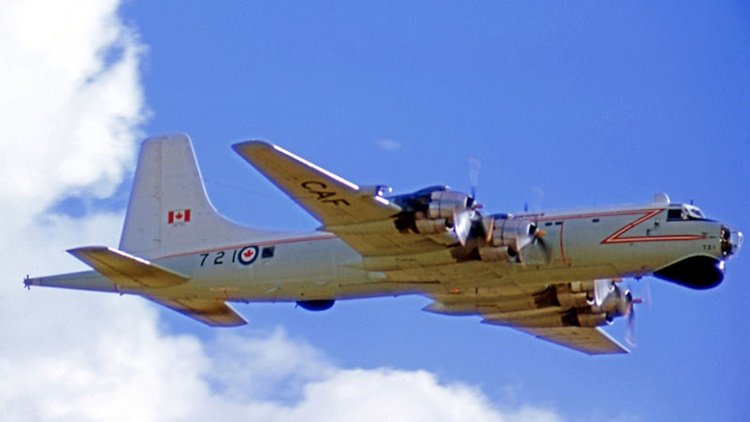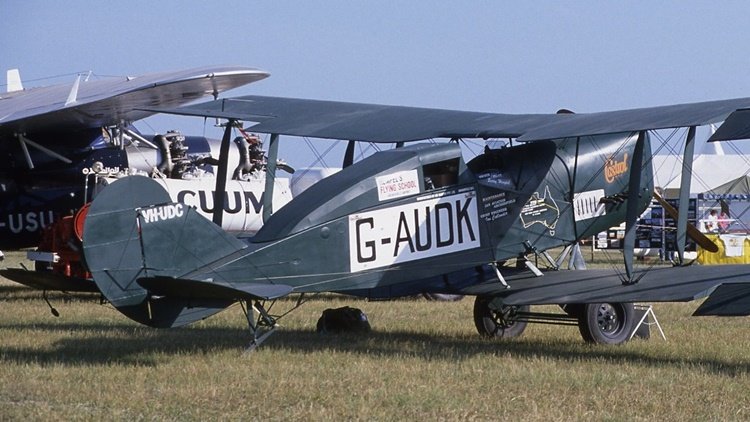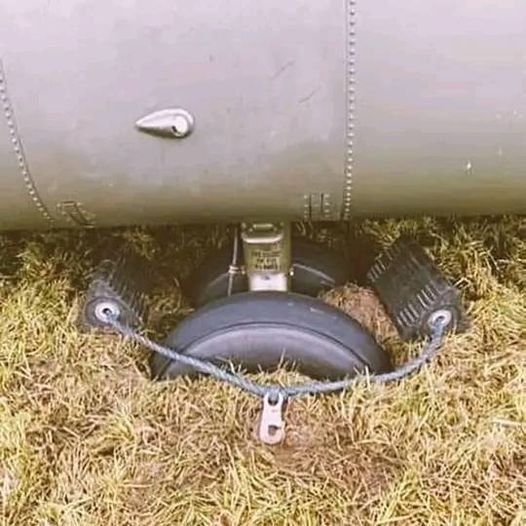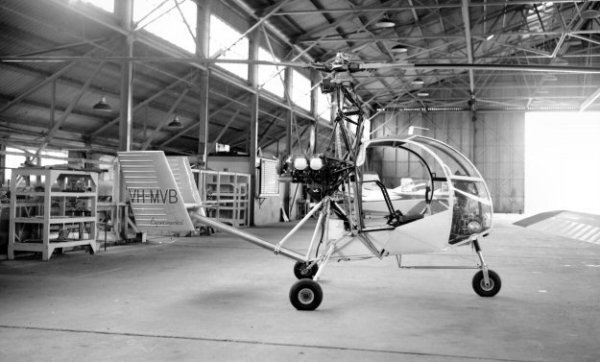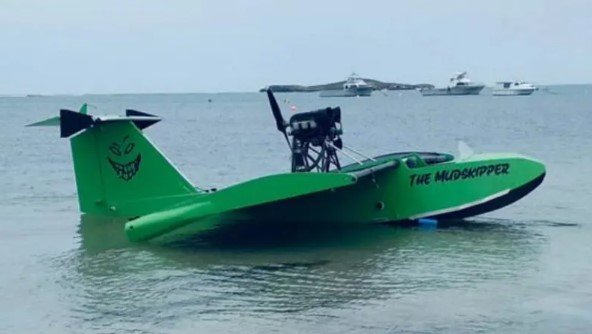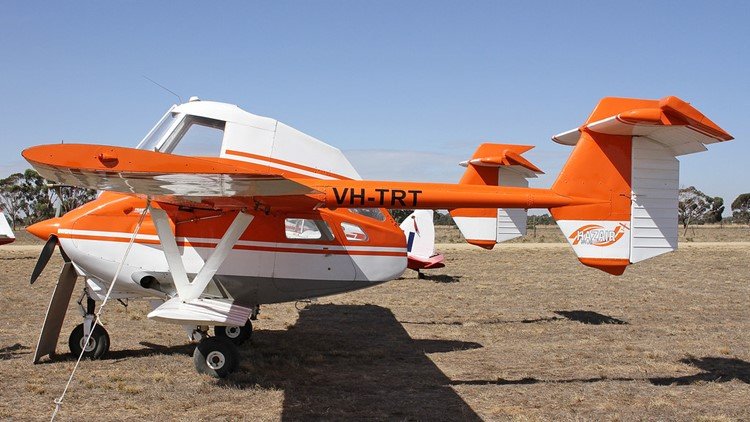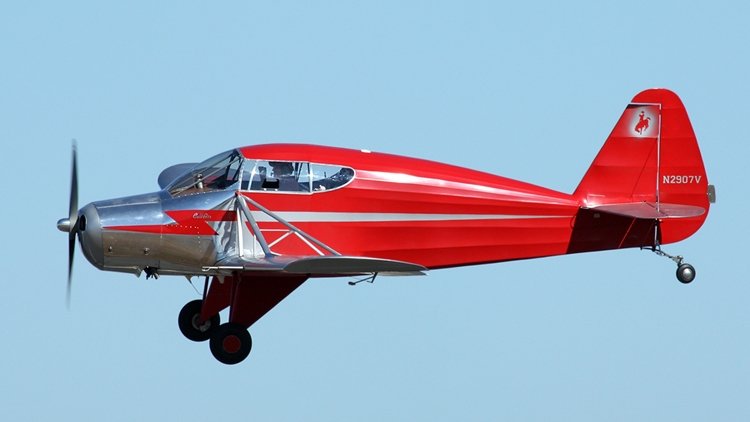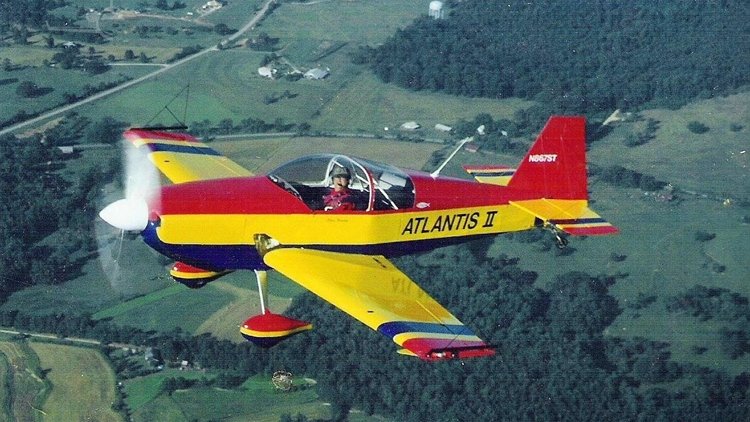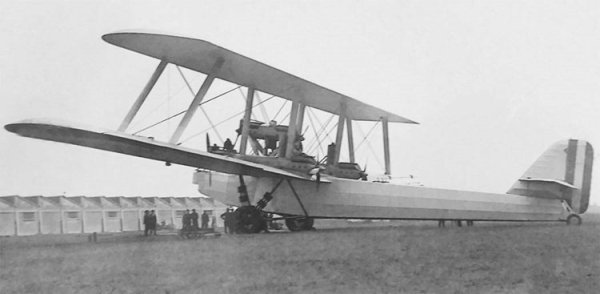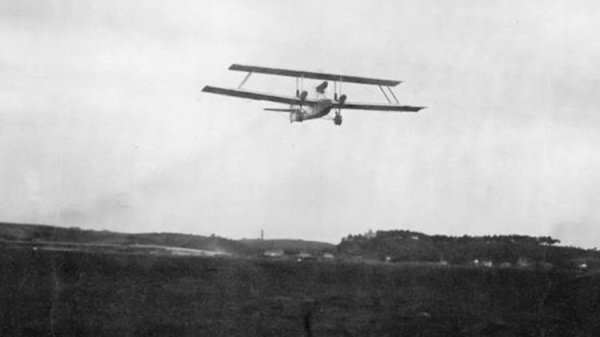-
Posts
7,562 -
Joined
-
Last visited
-
Days Won
67
Content Type
Profiles
Forums
Gallery
Downloads
Blogs
Events
Store
Aircraft
Resources
Tutorials
Articles
Classifieds
Movies
Books
Community Map
Quizzes
Videos Directory
Everything posted by red750
-
The Yakovlev Yak-30 (NATO reporting name Magnum), originally designated Yakovlev 104, was Yakovlev's entry in a competition for the first military jet trainer aircraft designed for Warsaw Pact nations. Designed to succeed the Yak-17UTI, it also led to the development of the Yakovlev Yak-32 sport jet. The Yak-30 lost to the L-29 Delfin, and neither it nor the Yak-32 entered production. In 1959 the Soviet Air Force held a competition for the first purpose-built jet trainer to enter service with the Soviet Union and Warsaw Pact nations. Prior to this, all Soviet jet trainers, such as the Yakovlev Yak-17UTI, had been modified from existing jet fighters. Since Yakovlev had produced most of the Soviet Union's trainer aircraft since World War II, winning the competition was extremely important, as the winner would be produced extensively for many years. Yakovlev's entry in the competition was the Yak-30. Surprisingly, it was the only competitor from within the Soviet Union. The Yak-30 was an all-metal aircraft made entirely from light alloys. It was designed to be easy and inexpensive to build, the two wing spars being made from pressed-sheet ribs. The simple, elliptical fuselage housed the pupil and instructor in a single unpressurized tandem cockpit. Fuel was limited to 600 liters (132 gallons) in a bag tank located in the fuselage above the wing. The engine was the Turmanskii-designed RU-19, made especially for the aircraft. Like the rest of the aircraft, it was simply designed, a single-shaft turbojet with a seven-stage axial compressor, rated at 900 kg (1,984 lbs) thrust. Air was fed from very small inlets located in the wing roots, and discharged directly under the rear fuselage with no jetpipe. To ease servicing, the engine could be lowered straight down without disturbing the fuselage. The tailplane was fixed halfway up the sharply-swept fin, and all control surfaces were manually driven by rods which ran down a dorsal spine extending along the upper surface of the aircraft, ending at the rear of the canopy. The long, continuous canopy was of blown Plexiglas, and bulged to give a better downward view. It slid to the rear on long rails. The ejection seats could both be fired by the instructor, while the pupil could fire only his own seat. Both cockpit positions had a complete set of controls. The tricycle undercarriage was retractable. The main units retracted inward, while the steerable nosewheel retracted forwards into a bay covered by two doors. Though provisions were made for armament similar to the military version of the single-seat Yakovlev Yak-32, no armament was placed on the four prototypes. In August 1961, OKB pilot Smirnov set several official light jet world records in the Yak-30. These included speed over a 25 kilometer course (767.308 km/h), and maximum altitude of 16,128 meters. One of the surviving prototypes is on display at the Central Air Force Museum, at Monino, outside of Moscow. Only 4 units were completed.
-
The Bristol Bombay was a British troop transport aircraft adaptable for use as a medium bomber flown by the Royal Air Force (RAF) during the Second World War. The Bristol Bombay was built to Air Ministry Specification C.26/31 which called for a monoplane bomber-transport aircraft to replace the Vickers Valentia biplane in use in the Middle East and India. The aircraft was required to be capable of carrying 24 troops or an equivalent load of cargo as a transport, while carrying bombs and defensive guns for use as a bomber. This dual-purpose design concept was common to British pre-war designs. Other entries for the specification were the Armstrong Whitworth A.W.23 and the Handley Page HP.52. Bristol's design, the Type 130, was a high-wing cantilever monoplane of all-metal construction. Bristol's previous monoplane design, the 1927 Bagshot, had suffered from lack of torsional rigidity in the wings leading to aileron reversal. This led to an extensive research program at Bristol which resulted in a wing design with a stressed metal skin rivetted to an internal framework consisting of multiple spars and the ribs. This was the basis of the Bombay's wing, which had seven spars, with high-tensile steel flanges and alclad webs. The aircraft had a twin-tail and a fixed tailwheel undercarriage. The aircraft's crew consisted of a pilot, who sat in an enclosed cockpit, a navigator/bomb-aimer, whose working position was in the nose, and a radio-operator/gunner, who divided his time between the radio operator's position behind the cockpit and a gun turret in the nose. When the aircraft was operated as a bomber, an additional gunner was carried to man the tail gun position. In the prototype, this position was equipped with a Lewis gun on a Scarff ring but in production aircraft, both gun positions were hydraulically-operated gun turrets each armed with a Vickers K machine gun. Eight 250-pound (110 kg) bombs could be carried on racks under the fuselage. A prototype Type 130 was ordered in March 1933 and first flew on 23 June 1935, powered by two 750 horsepower (560 kW) Bristol Pegasus III radial engines driving two-bladed propellers. Testing was successful and an order for 80 was placed as the Bombay in July 1937. These differed from the prototype in having more powerful (1,010 hp (750 kW)) engines driving three-bladed Rotol variable-pitch propellers, discarding the wheel spats fitted to the undercarriage main wheels in the prototype. As Bristol's Filton factory was busy building the more urgent Blenheim light bomber, the production aircraft were built by Short & Harland (owned by Short Brothers and Harland and Wolff) of Belfast. The complex nature of the Bombay's wing delayed production at Belfast. The first Bombay was not delivered until 1939 and the last 30 were cancelled. No 1 Air Ambulance Unit (No 1 AAU) of the RAAF was formed at Laverton, VIC on 15 February 1941 and was one of a small number of RAAF units designated to operate under RAF control. Amongst other types, it operated the Bombay from February 1943 to February 1944 when the unit was withdrawn from the Western Desert. The unit commenced operations from Gaza in August 1941 initially operating de Havilland DH.86, Bristol Bombay, Lockheed Lodestar and Grumman Goose types. It supported Commonwealth units during the North African campaign, and operated during the Tunisian campaign and the Allied invasion of Sicily. The Bombays were received from No 216 Squadron RAF, which re-equipped with the Vickers Wellington. However, the Bombay was slow, suffered mechanical problems, and made its last evacuation operation in November 1943. The survivors of the type were used to carry medical supplies up until January 1944. Bombays evacuated over 2,000 wounded during the Allied invasion of Sicily in 1943, and one crew was credited with carrying 6,000 casualties from Sicily and Italy before the type was finally withdrawn from use in 1944. Variants Type 130 : Prototype. Type 130A Bombay Mk I : Twin-engined medium bomber and troop transport aircraft. Original designation Type 130 Mark II. Type 137A Proposed civil transport version. Unbuilt. Type 137B Combi version of Type 137A. Unbuilt. Type 144 Unbuilt development with retractable undercarriage proposed for Specification B.4/34 (won by Handley Page Harrow). A total of 51 units were built.
-
I'll take your word for it OT, but it was a copy and paste from Wikipedia.
-
The Canadair CP-107 Argus (company designation CL-28) is a maritime patrol aircraft designed and manufactured by Canadair for the Royal Canadian Air Force (RCAF). In its early years, the Argus was reputedly the finest anti-submarine patrol bomber in the world. The Argus served throughout the Cold War in the RCAF's Maritime Air Command and later the Canadian Force's Maritime Air Group and Air Command. The Argus replaced the last of the Avro Lancasters as well as the Lockheed Neptunes that had been bought as an interim measure pending the arrival of the Argus in the maritime reconnaissance or patrol role. One of the most effective anti-submarine warfare (ASW) aircraft of its day, the Argus was a mainstay for the RCAF. A large amount of equipment was carried, including: search radar, sonobuoys, electronic counter measures (ECM), explosive echo ranging (EER) and magnetic anomaly detector (MAD). Up to 8,000 lb (3,600 kg) of weapons could be carried in the bomb bays, including torpedoes and depth charges. A flight crew of 15 consisting of three pilots, three navigators (Observer Long range), two flight engineers and six radio officers (observer rad) until the early 1960s when the crew included both commissioned officers (tactical navigator/radio navigator) and non commissioned officers (observers), the number of which was dependent on the mission. Four crew bunks and a galley were provided to extend the efficiency of the crew on long patrols (average 18 hrs). The CL-28 had an endurance of approximately 26½ hours with full armament. An Argus flown by 407 Maritime Patrol Squadron on 1-2 October 1959 held the Canadian military record of slightly over 31 hours for the longest flight by an unrefuelled aircraft, while covering a distance of 4,570 mi (7,350 km) from RNZAF Base Ohakea in New Zealand to Naval Air Station Barbers Point in Hawaii, before continuing across the rest of Pacific and most of Canada. Due to unexpectedly strong headwinds that greatly increased fuel consumption, they chose to land in RCAF Station North Bay where they had less than an hour of fuel remaining, after an additional 20 hours of flying. The 31 hour record flight broke the previous distance record, set by another Argus from the same squadron, of 4,210 mi (6,780 km). The principal difference between the Mk.1 and Mk.2 was in the different navigation, communication and tactical electronic equipment fitted internally. Externally, the Mk II had a smaller redesigned nose radome and additional ECM antenna above the fuselage. The Argus flew its last service mission on 24 July 1981, and was replaced by the Lockheed CP-140 Aurora. Variants Argus Mk.1/CL-28-1 : Long-range maritime reconnaissance aircraft for the RCAF. This aircraft was fitted with an American AN/APS-20 radar in a chin-mounted radome. 13 built. (serials 20710-20722) Argus Mk.2/CL-28-2 : Long-range maritime reconnaissance aircraft for the RCAF. This aircraft was fitted with a British ASV-21 radar in a chin-mounted radome. 20 built. (serials 20723-20742)
-
The Zenith STOL CH 801 is a four-seat sport STOL aircraft developed by Chris Heintz and available in kit form from the Zenith Aircraft Company. The CH 801 is based on the general design and features of the smaller two-place STOL CH 701 model. It offers a useful load of 1,000 lb (450 kg), which is double the 701's 500 lb (230 kg). While both aircraft look alike they do not share any common parts. The STOL CH 801 is made from sheet aluminium and employs a deep wing chord, full-length leading edge slots and trailing edge flaperons to develop high lift at low speed, while maintaining a short wing-span for maximum strength and ground maneuverability. By the end of 2011, 160 CH 801s had been completed and were flying.
-
The Bristol Tourer was a British civil utility biplane produced in the years following the First World War, using as much as possible from the design of the Bristol Fighter aircraft. Bristol Tourers were delivered with a variety of engines, subject to availability and customer desires; these included the Rolls-Royce Falcon, Siddeley Puma, Hispano-Suiza 8, and Wolseley Viper. Many Tourers were fitted with a canopy to cover the one or two passenger seats in the rear cockpit, giving the type its original name of Coupé. The pilot's cockpit, however, remained open. Bristol Tourers operated by Western Australian Airways made the first scheduled airline services in Australia, commencing on 4 December 1921 between Perth and Geraldton. Details of the nine Tourers which served in Australia can be found here. Variants Type 27 First Tourers for the British Controller of Civil Aviation, fitted with Rolls-Royce Falcon engines and dual controls (3 built) Type 28 Similar to Type 27 with canopy for rear seat (Specifications below) Type 29 Siddeley Puma-engined version for Bristol as company transport (2 built) Type 45 "Scandinavian Tourer" Similar to Type 29 with ski undercarriage. Type 47 Three-seat version with open rear cockpit. Type 48 Similar to Type 47 but built as floatplane. Type 81 "Puma Trainer" Similar to Type 29 modified as trainer (1 converted, 4 newly built) Type 81A Similar to Type 81 with revised undercarriage and empennage for Greek military (6 built) Type 86 "Greek Tourer" Similar to original Bristol Fighter and able to be armed for Greek Air Force (6 built) Type 86A Three-seat version of Type 86. Type 88 "Bulgarian Tourer" Powered by Wolseley Viper for Bulgarian Post Office, two aircraft were delivered in April 1924. Type 88A "Improved Bulgarian Tourer" With various modifications, three aircraft delivered in 1926.
-
-
Victa R-101 Gyroplane In addition to its develoment of the Airtourer, Victa Consolidated Industries also wanted to produce a light, all-metal rotary-wing aircraft hopefully for both civilian and military use. The prototype of this venture had its first flight in May 1962. It featured a tricycle undercarriage, twin-fin tail unit and a two-blade main rotor with a pusher propeller driven by a 180hp Lycoming engine. Greg Banfield's shot (below) was taken in the Bankstown hangar in February 1965. The autogyro was designed by John Blackler and known variously as the R-101 and Project 67. When the company abandoned aviation work in 1966 due to financial constraints, development of the Gyroplane ceased. AESL in New Zealand, who took over Airtourer production, elected not to go ahead with furthering the cause of this promisingly little craft. It is now preserved at the Camden Museum of Aviation in New South Wales. Above text and image from edcoatescollection.com
-
A homebuilt light aircraft, designed to fly at "2 metres above the water at 120 kph" has crashed in Lancelin Bay, WA. Two people on the plane – the pilot and a passenger. Both sustained minor injuries and were assessed by paramedics at the scene.
-

Skydiving plane crashes near Geelong 20/10/2023
red750 replied to red750's topic in Aircraft Incidents and Accidents
-

Skydiving plane crashes near Geelong 20/10/2023
red750 replied to red750's topic in Aircraft Incidents and Accidents
So long as you see it. If it is moving up, down, left or right in your windscreen, you will miss it. If it remains fixed, you'll likely hit it if you don't take corrective action. Only came close once, at Moorabbin. Both aircraft turning onto base for rwy 35, one on 35L for full stop, one on 35R for touch and go. -

Skydiving plane crashes near Geelong 20/10/2023
red750 replied to red750's topic in Aircraft Incidents and Accidents
-

Skydiving plane crashes near Geelong 20/10/2023
red750 replied to red750's topic in Aircraft Incidents and Accidents
Interesting reading those two reports linked in Onetrack's post that both engine failures occurred passing through 12,500 ft. -

Light aircraft crash near Palgrave, Qld. 19/10/23
red750 replied to dlegg's topic in Aircraft Incidents and Accidents
Seven news advises pilot deceased. Jabiru 160 according to https://aviation-safety.net/wikibase/346980 -
I cannot believe that I had not completed a profile for this aircraft before. I had collected the above photos in2019, but saved them in the completed folder, not the "To Do" folder. I discovered the profile had not been created when I went to add the photo of the formation below in the comments. This photo appeared on Facebook today.
-
The Transavia PL-12 Airtruk is a single-engine agricultural aircraft designed and built by the Transavia Corporation in Australia. The Airtruk is a shoulder-wing strut braced sesquiplane of all-metal construction, with the cockpit mounted above a tractor-location opposed-cylinder air-cooled engine and short pod fuselage with rear door. The engine cowling, rear fuselage and top decking are of fibreglass. It has a tricycle undercarriage, the main units of which are carried on the lower sesquiplane wings. It has twin tail booms with two unconnected tails. Its first flight was on 22 April 1965, and was certified on 10 February 1966. A Transavia PL-12 featured in the 1985 movie Mad Max Beyond Thunderdome. It was developed from the Bennett Airtruck designed in New Zealand by Luigi Pellarini. It has a 1 tonne capacity hopper and is able to ferry two passengers as a topdresser. Other versions can be used as cargo, ambulance or aerial survey aircraft, and carry one passenger in the top deck and four in the lower deck. The Airtruk is also sometimes known as the Airtruck. Because the name "Airtruck" was registered by the New Zealand companies Bennett Aviation Ltd and Waitomo Aircraft Ltd, for their PL-11, Transavia found another name for their PL-12 ("Airtruk"). July 1978 saw the first flight of an improved model, the T-300 Skyfarmer, which was powered by a Textron Lycoming IO-540-engine. This was followed in 1981 by the T-300A with improved aerodynamics.[2] Transavia ceased production of the T-300 in 1985. In 1982 certification was undertaken to enable sales in the North American market. Assistance was provided by the Aeronautical Research Laboratories (ARL) of the Defence Science and Technology Organisation (DSTO) and extensive tests carried out on the ground and in subsequent flight flutter clearance trials. ref. DSTO Structures Tech. Memo. 341 In 1985 an extended version was produced and released as the T-400. The engine was changed from a 6-cylinder to an 8-cylinder and the tail booms extended by 750 millimetres (30 in). Other minor changes were made to the aerodynamics. Flutter clearance tests were again carried out by ARL and manufacture proceeded. An isolated flutter incident was reported in 1986 involving violent oscillations of the rudder and tail boom on the T-400 during a delivery flight. Investigations were carried out by ARL and a split mass balance arm was fitted to each rudder. Prior to this the aircraft had relied on frictional damping provided by the lengthy control cables. The modified aircraft was tested both on the ground, and in flight trials in March 1988 over Port Philip near Melbourne, Australia. All attempts to induce the oscillations showed that there was no indication of a mode of vibration becoming unstable. The maximum speed achieved was 160 knots (180 mph; 300 km/h) in a steep dive. Oscillations were induced with an air operated tool fitted with an out-of-balance rotating mass. This device had a rotational speed from 18 Hz down to zero for each charge of the compressed air cylinder. At least 120 had been built by 1988. For operatios,survivors and variants, click here.
-
The CallAir Model A is a light aircraft from the US manufacturer CallAir Inc., which was developed in the early 1940s and whose agricultural aircraft variant was built until 1984. Reuel T. Call, an aviation enthusiast rancher and shipper from Wyoming , purchased a 1933 open- cockpit Kinner Sportster , which he transferred from the Glendale factory in the middle of winter. He was so enthusiastic about the machine's performance in the high mountains that in 1937 he and his brothers decided to design their own machine, the Call-Air, based on the Sportster. The first version of the Model A used an 80 hp Continental A-80 for its first flight in the winter of 1940 and was intended for use by ranchers and farmers in high-altitude, mountainous areas. CallAir's factory airfield was at an altitude of 1,900 m. In July 1941, the prototype received a more powerful Lycoming engine with 100 hp. Series production was supposed to begin in 1942, but could not begin because the USA entered the war and the associated cessation of civil aircraft construction. The Call family waited until 1946 to introduce the improved A-2 variant with a 125 hp engine, which quickly became a sales success in the northwestern United States. Since the materials for construction were difficult to obtain, Call bought the rights to the Interstate Cadet primarily because of the materials still available at Interstate. In 1947, the A-3 version received its type certification with a 125 hp Continental engine, followed by the A-4 with a 135 hp engine . With the A-5 and A-6, agricultural aircraft variants of the model were created for the first time. In total, CallAir's production of the Model A amounted to 140 series units in addition to the prototype. Divided into the variants, these were: 4 A-1, 13 A-2, 15 A-3, 30 A-4, 45 A-5, 19 A-6, 3 A-7. Another 11 copies have no variant assignment. In 1962, Intermountain Manufacturing Co. (IMCO) purchased CallAir at a public auction. IMCO developed the IMCO CallAir A-9 , a modified variant of the A-5 and A-6, which was delivered at a rate of one per week from March 1963. The biggest change compared to the original design was the relocation of the spray container (hopper) between the engine and cockpit for safety reasons. IMCO produced 78 A-9s. IMCO was taken over by Rockwell Standard 's Aero Commander division in 1966 , which also received the production rights for the A-9. Aero Commander marketed the A-9 as the Quail Commander . Since 1965, Aero Commander also produced the Aero Commander Ag Commander , referred to as Aero Commander Thrush Commander from 1967 , so confusion can arise here. In 1967, Rockwell-Standard merged with North American Aviation . On April 23, 1971, North American Rockwell (NAR) announced that the newly formed Aeronautica Agricola Mexicana SA (AAMSA), in which NAR held a 30% interest, would acquire the production rights, tools and materials for the Sparrow Commander and the Quail Commander bought. At AAMSA, the further developed IMCO CallAir A-9 continued to be built as the AAMSA A9B-M Quail until 1984. Versions A prototype 80 hp Continental A-80, first flight in 1940 A-1 Four-cylinder Lycoming O-235-A or -B (100 hp), 4 examples, type certificate ATC #758 on July 26, 1944 A-2 Four-cylinder Lycoming O-290-A (125 hp), type certificate July 31, 1946 A-3 Six-cylinder Continental C-125-2 (125 hp), type certificate November 6, 1947 A-4 Four-cylinder Lycoming O-320-A2A (150 hp), first flight December 14, 1954 A-5 Agricultural aircraft variant with 150 HP, 2 people on tandem seats on the left side, spray container on the right in the fuselage A-6 Agricultural aircraft variant with 180 hp, first flight December 18, 1957, like A-5 but larger fuel capacity A-7 Similar to A-5, but powered by a Continental W670-240 radial engine . An example converted from A-6 No information is available about a possible version A-8 A-9 Built by IMCO, for further development see AAMSA A9B-M Quail
-
The Aircraft Technologies Atlantis is an American aerobatic homebuilt aircraft, built by Aircraft Technologies of Lilburn, Georgia. The aircraft is supplied as a kit or in the form of plans for amateur construction. The Atlantis is a two-seat side-by side low wing aircraft with conventional landing gear. The fuselage is constructed of welded steel tubing.] Fuel tanks are located in the wings, with a central header tank. The aircraft uses two control sticks for each pilot and a pull-up flap handle between the seats. The seats recline to a 35 degree angle. In November 2014 three examples were registered in the United States with the Federal Aviation Administration.
-
You couldn't identify it, so it was an Unidentified Flying Object, no?
-
A report in the Daily Mail states that a light aircraft has crashed at Tygalgah NSW. The report states the pilot was rushed to hospital with minor injuries. The accompanying photo shows an airborne Cessna 210 Centuion with New Zealand registration, so this is likely a stock photo. https://www.dailymail.co.uk/news/article-12632243/Tygalgah-plane-crash-Pilot-rushed-hospital.html?ito=social-facebook
-
The Caproni Ca.90 was a prototype Italian heavy bomber designed and built by Caproni. When it first flew in 1929, it was the largest land-based aircraft in the world. A six-engined inverted sesquiplane, (lower wing longer than the upper wing), the Caproni Ca.90 was designed as a heavy bomber and first flew in 1929. It had two tandem pairs of 1,000 hp (746 kW) Isotta Fraschini Asso 1000 W-18 piston engines mounted above the lower wing, each pair driving a four-bladed pusher and a two-bladed tractor propeller. Another pair of engines was mounted above the fuselage. Only one Ca.90 was built. Length: 26.95 m (88 ft 5 in) Upper wingspan: 34.90 m (114 ft 6 in) Lower wingspan: 46.60 m (152 ft 11 in) Height: 10.80 m (35 ft 5 in) Wing area: 496.60 m2 (5,345.4 sq ft) Empty weight: 15,000 kg (33,069 lb) Max takeoff weight: 30,000 kg (66,139 lb)


